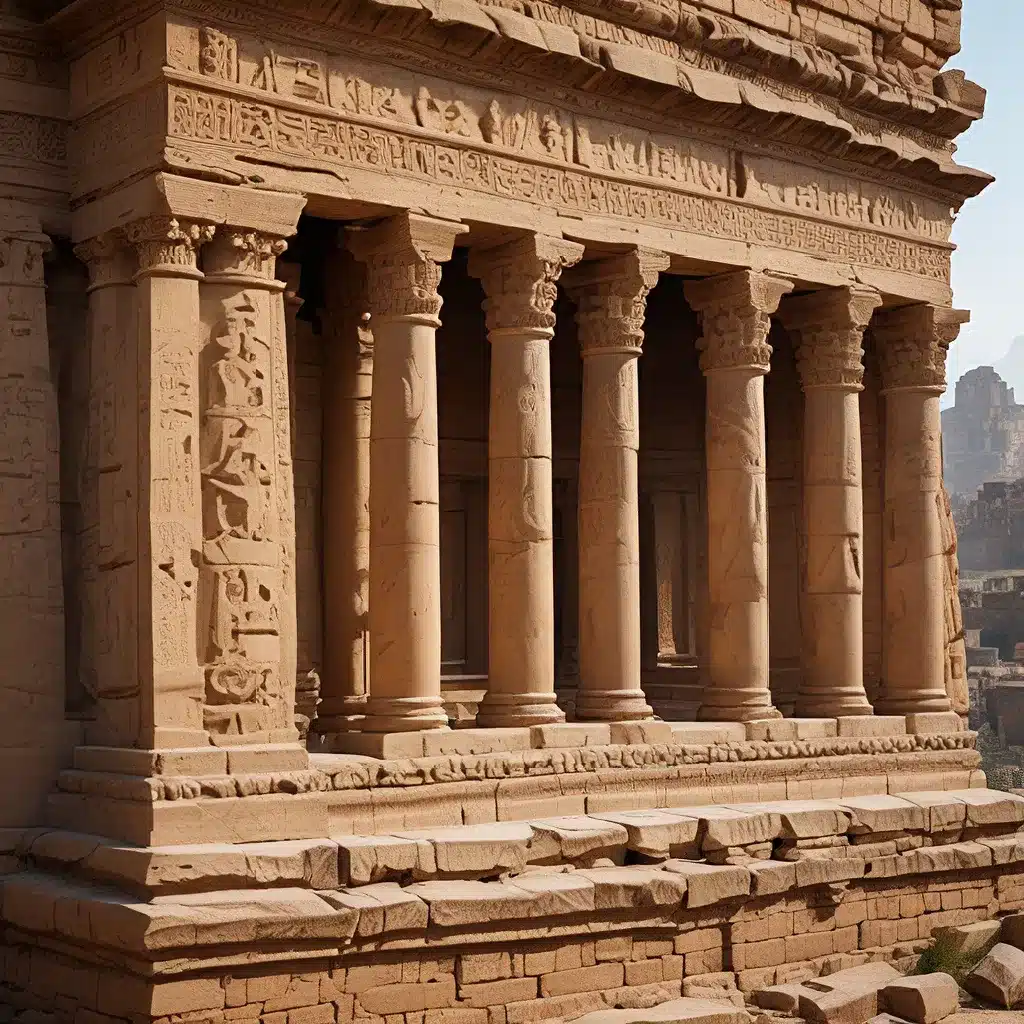
Discovering the Hidden Meanings in Architectural Motifs
Throughout the annals of human history, ancient civilizations have expressed their cultural beliefs, spiritual connections, and societal structures through the intricate language of architecture. From the towering pyramids of Egypt to the elaborate mosaics of the Mediterranean, these structures have long captivated the imaginations of scholars, historians, and the curious alike. At the heart of this architectural symbolism lies the grapevine, a motif that has transcended time and space, serving as a cultural keystone in numerous ancient societies.
The grapevine’s morphological features, from its round, fertile fruits to its cyclical pattern of life, death, and rebirth, have imbued it with a rich tapestry of symbolic significance. In the ancient world, this delicate plant was closely associated with deities such as the Great Mother, Osiris, Dionysus, and Bacchus, embodying themes of abundance, regeneration, and the divine connection between the earthly and spiritual realms.
As noted by Ulyana Egof, the grapevine’s presence in diverse art forms, from mural paintings to mosaics, sculptures to architecture, suggests that it served as a universal language shared among the Mediterranean civilizations. “The grapevine is one of the most prevalent motifs produced by the Mediterranean cultures and was a common language they all shared,” Egof observes, highlighting the power of this ancient symbol to transcend time and communicate across generations.
Symbolic Significance in Ancient Cultures
The Great Mother and the Cycle of Life
The Great Mother, the primal goddess of the earliest Mediterranean civilizations, was closely associated with the grapevine, an embodiment of nature’s generative power. The plant’s cyclical pattern of life, death, and rebirth mirrored the eternal rhythms of existence, resonating with the Great Mother’s dominion over the cycle of life.
In ancient Egypt, the grapevine was linked to the god Osiris, the ruler of the underworld and the personification of the agricultural cycle. The grapevine’s ability to spring back to life each spring reflected Osiris’ own journey of death and resurrection, symbolizing the eternal nature of existence.
Dionysus, Bacchus, and the Mystical Transformation
The Greek god Dionysus, and his Roman counterpart Bacchus, were closely tied to the grapevine, with control over wine and the life-giving sap that rises from the earth. The intoxicating effects of wine were seen as a means to establish a spiritual connection with the divine realm, and the grapevine became an intrinsic part of the deities’ iconography.
The process of transforming grape juice into wine was viewed as a profound metamorphosis, akin to the passage from life to death. The deep, blood-like color of wine further sparked associations with the belief that the grapevine itself had sprouted from the blood of mortals who dared to challenge the gods.
Continuity and Adaptation in Christianity
The rich symbolic language of the grapevine did not end with the ancient Mediterranean civilizations. Christians adopted numerous pagan symbols, including the grapevine, and adapted them into more redemptive themes. In the Gospel of John, Jesus proclaims, “I am the vine, you are the branches. If you remain in me and I in you, you will bear much fruit; apart from me you can do nothing.” Here, the grapevine metaphor conveys a profound spiritual message, connecting the consecrated wine with the blood of Christ.
The enduring presence of the grapevine motif across diverse ancient cultures and its seamless integration into Christian iconography underscores the plant’s universal significance as a symbol of abundance, fertility, regeneration, and the divine connection between the earthly and spiritual realms.
Unveiling the Narratives in Ancient Architecture
The architectural marvels of the ancient world, such as the Ilissos Basilica mosaics in Athens, serve as rich repositories of this symbolic language. As Ulyana Egof observes, the intricate grapevine motif that weaves around the entire mosaic floor “binding the mosaic panels together like a unifying frame” holds profound symbolic significance, understood and appreciated by the people of the time.
Similarly, the cave art found across the globe, from the Sulawesi island in Indonesia to the Cumberland Plateau in North America, reveals the storytelling capabilities of our ancient ancestors. As Becky Little explains, these early artistic expressions, ranging from abstract markings to detailed depictions of animals and hybrid figures, suggest a symbolic language that may have been connected to the development of human language itself.
The sun cross symbol, for example, has been found in various ancient cultures, serving as a unifying motif that transcended geographical and temporal boundaries. These architectural and artistic elements not only reflect the aesthetic sensibilities of their creators but also offer a glimpse into the complex belief systems, spiritual practices, and societal structures that shaped the ancient world.
Unlocking the Secrets of the Past
As we delve deeper into the symbolic language of ancient architecture, we uncover a tapestry of cultural heritage that continues to captivate and inspire. From the grapevine’s enduring presence in the art and iconography of the Mediterranean civilizations to the narratives encoded in prehistoric cave paintings, these architectural and artistic expressions offer a window into the rich, interconnected history of our ancestors.
By exploring the hidden meanings and cultural significance embedded in these ancient structures, we gain a more nuanced understanding of the beliefs, values, and worldviews that shaped the development of human civilization. This journey of discovery not only broadens our historical knowledge but also illuminates the timeless power of art to transcend the boundaries of time and space, serving as a universal language that connects us to our shared past.
As we continue to unravel the mysteries of the ancient world, the Lost Kingdoms website provides a valuable resource for exploring the symbolic language of ancient architecture and the cultural landscapes that gave rise to these architectural masterpieces. Join us in this captivating adventure as we unveil the secrets of the past and celebrate the enduring legacy of our ancestors’ extraordinary achievements.


